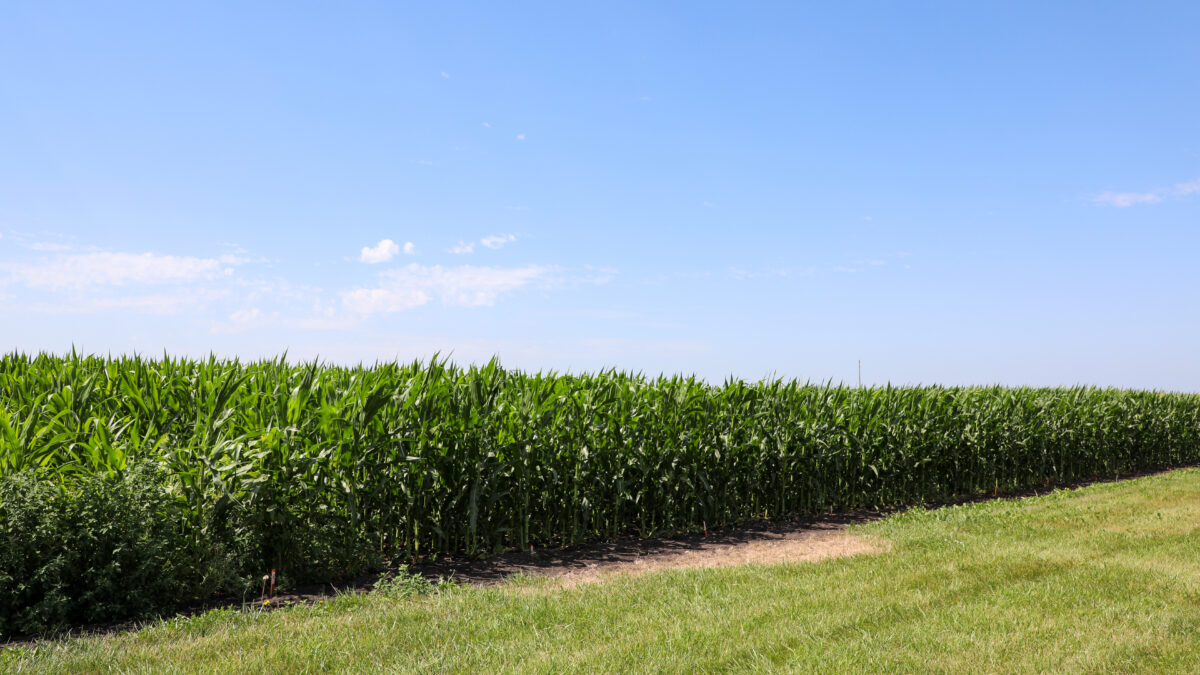What Do We Need to Know about GMOs?
Guest Author
Special Contributor to FB.org

photo credit: Right Eye Digital, Used with Permission
Guest Author
Special Contributor to FB.org
For some time now, there has been steady chatter about labeling GMOs. Chatter is one thing, but uninformed chatter is quite another.
With the recent GMO disclosure bill signed into law, a national QR code for foods produced with GM crops will be in the works. Personally, I dislike the idea that we, as Americans, have come to a point where the demands of a few outweigh science and common sense. But if a consumer really wants to know more about GMOs, information will soon be just a scan away. A QR code is perfect for streamlining this kind of information. The Agriculture Department will take the lead in developing a national standard with a uniform symbol and consistent information—rather than the patchwork of misleading labels we see now.
As a farmer and a mother of five kids, I have no concerns over serving foods grown or produced with GM crops. A GMO isn 't some mystery ingredient: it 's a process for growing food more sustainably. Something we should all be able to get behind. A label is unnecessary, but unfortunately, many consumers have developed a fear of the unknown rather than learning about the process. People see the term "non-GMO" so much now that they think GMOs must be "bad." The reality is, those labels are just another marketing ploy.
Now, before you scream "What?!" let me explain. Food labels are meant to point to nutritional values or warn against health risks (like allergens). Decades of research and approval processes by USDA, the Food and Drug Administration and the Environmental Protection Agency, all affirm the safety of GMOs. Did you know there is more research and approval required for the seeds that farms have available to choose from, than many of the over-the-counter medicines, dietary supplements and vitamins you have in your cupboards? Just look at the labels and see which ones say "approval by FDA or USDA pending" or "statements have not been evaluated by the FDA." Yet, we buy them without a second thought. Why? Because someone told us they would do something for us, solve an ailmentor maybe even make us skinny!
As a farmer, I am thankful for the availability of biotechnology and the research that goes into each seed we choose. The process used in breeding plants for specific traits is complex and time-consuming, but simply boils down to replicating a process of resistance or tolerance that occurs naturally over time. Several companies use this technology, not just one. Are we forced to plant a genetically modified seed? No. Do we choose to plant them? Yes. If a particular seed helps me reduce soil erosion and cut back on pesticide and herbicide use, it is worth my consideration.
So, I ask, why label a process that has no risks, but rather many proven benefits? Identifying genetic traits and breeding plants, thus seeds, is science, it 's nature, and it is something that precision technology makes possible in a controlled setting, reducing variables and drastically cutting down on time to market – decades to be exact. We demand genetic identification in people for disease traits, deformities and cures for ailments, yet want to deny it when it comes to development in sustainability, preserving resources and fiscal responsibility. This makes no sense, and further highlights the lack of understanding around GMOs.
I encourage you to promote the new QR code as a tool for consumer education. Let it not simply be a symbol of identification, but a resource where information can be funneled about farming, crops, farmers and agriculture in general. Perhaps the new code can also become a tool for cleaning up packaging and sharing additional nutritional and product information. If we all do a better job of learning and being "in the know" by sharing on a uniform platform for all, maybe we can recruit more "ag-vocates" along the way.
Katie Heger, a member of AFBF 's GO Team, blogs at hegerfamilyfarms.wordpress.com and shares at Heger Farms on Facebook. Katie and her husband farm corn, soybeans and wheat in central North Dakota.